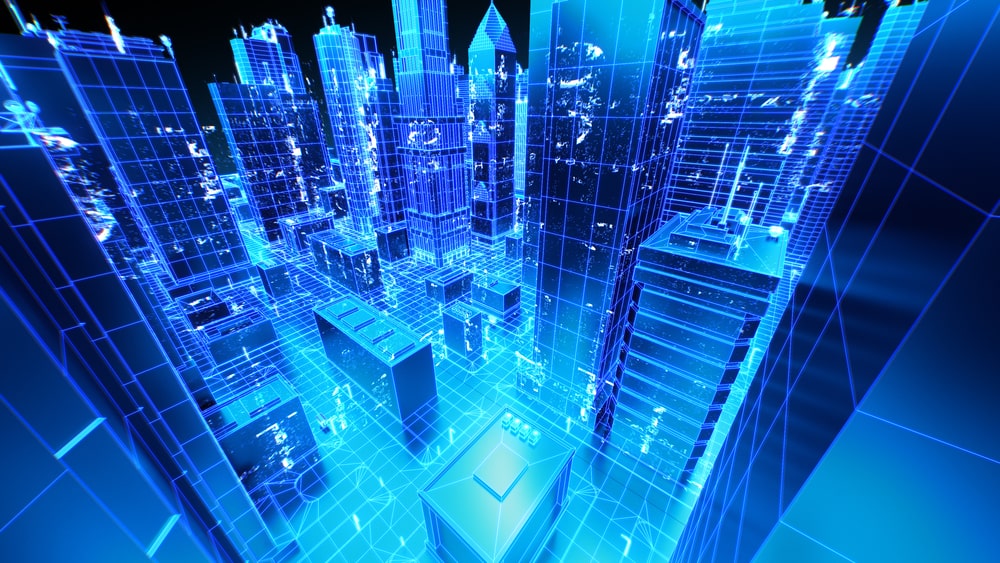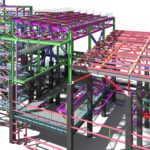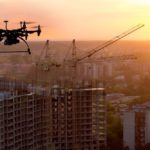News - Construction News
Digital twins in the building industry

Despite the continued improvement in the UK construction industry’s digital adoption, it still lags behind other sectors. Faced with the challenge of improving productivity, which has traditionally been held back by complex and evolving environments, fractured supply chains and large amounts of regulation, the use of digital twin technology could be a turning point, unlocking new possibilities within the sector, according to Ali Nicholl of Iotic.
So, what exactly is a digital twin? It is a virtual version of a process, product or service, which creates a two-way link between the physical and virtual world. The twins work by interrelating data and controls from across an entire eco-system, collected via sensors, platforms and databases and allowing it to interoperate. Pairing the physical and virtual versions enables analysis of data from its conception, to its use and monitoring. The data can then be passed from real-life situations to the virtual entity which interacts with multiple different sources and even contextual data such as the weather and environmental information. This means information can be gathered about the real-time status and working conditions of a site, project, building, material, piece of machinery and even a person.
In the construction business, linking a virtual version of a building to its real-world counterpart can show site workers how it is performing in real time. An example is connecting the behaviour of people wanting to use the lifts, showing demand at different times of the day, the weather and building occupancy to enable facilities management teams to improve efficiency and minimise downtime. This information can also be of use to architects, engineers and consultants in enhancing the designs of future buildings and enable managers to make investment decisions from actual actionable data, making them more efficient and able to understand the impact of changes to better manage assets over time.
Also, connecting twins of different buildings and their construction sites, along with the layers of infrastructure, will also give the industry the means to be able to create ‘smart cities’ as designers and town planners can interrelate event-driven data to gain insights into a ‘living’ city. Scenarios such as the impact of a new building on traffic flow or water and power supplies can be simulated to gauge how to go forward with town planning, for example and put in place the appropriate measures to help combat the effects of climate change, for instance.
Digital twins also have the potential to prevent serious accidents and reduce risks in an industry covered from top to bottom in health and safety regulations. This is by being able to monitor assets to avoid potential failures, automate tasks and maximise returns from resources, which can be done by automatic resource allocation and the tracking of waste, which allows for a leaner approach, saving money as well as time.
Being able to track people on hazardous sites using the technology can prevent inappropriate behaviour, the use of unsafe materials and unnecessary human activity in hazardous zones. It can also be used to develop early notification and alarm systems, alerting workers and other staff to any nearby dangers, even keep digital records of all the personnel and their locations on a site so this information could be used by rescue teams in a case of emergency and/or accident.
In addition, it would be possible to free staff up from tedious monitoring and management tasks where possible, meaning more of their time can be spent on work which directly impacts the project or business and increases overall productivity.
The bringing together of previously unrelated data can help people working in construction learn lessons and uncover opportunities within a virtual environment which can then translate into the real world and help transform business.
It is clear that technology can play a much more significant role in the day to day operation of construction firms as they strive for greater productivity. Incumbent suppliers risk being disrupted by consortia of smaller technology-enabled enterprises that can form flexible secure partnerships and ecosystems to deliver services more efficiently and more productively. Digital twins provide a secure iterative pathway for the adoption of disruptive technologies in a predominately traditional industry, leveraging existing systems, databases, and technology investments while capitalising on future digital advancements.
If you would like to read more articles like this then please click here.
Related Articles
More News
- UK Introduces New Trade Measures to Support Steel Sector
11 Jul 25
Steel producers across the UK will benefit from stronger trade measures from 1 July.
- Clean energy future to be ‘built in Britain’
10 Jul 25
The Clean Energy Industries Sector Plan comes into force to ‘build it in Britain’.
- Thousands more to get the tools they need to start construction careers
9 Jul 25
Thousands of people are set to benefit from on-the-job training and career opportunities in the






